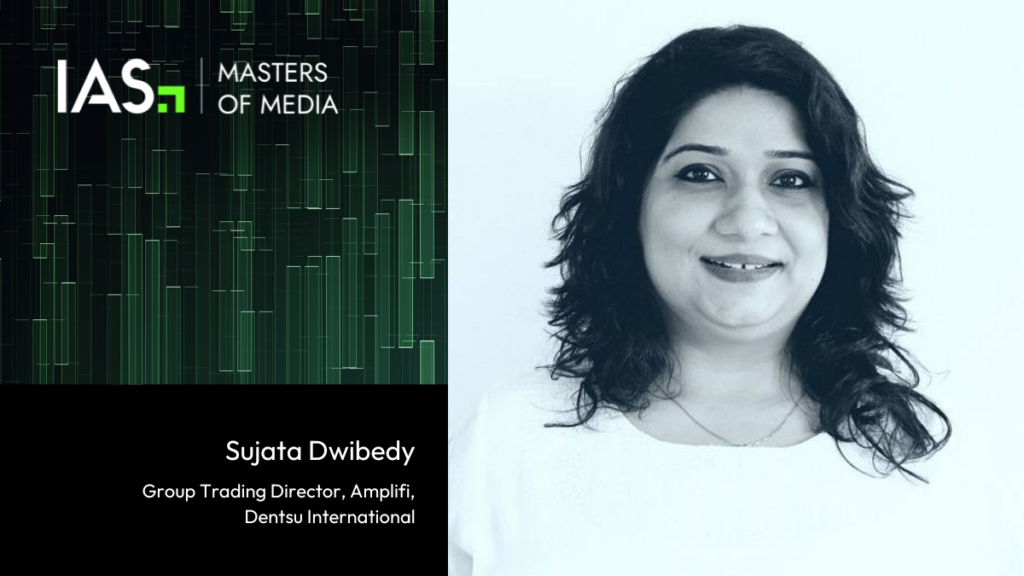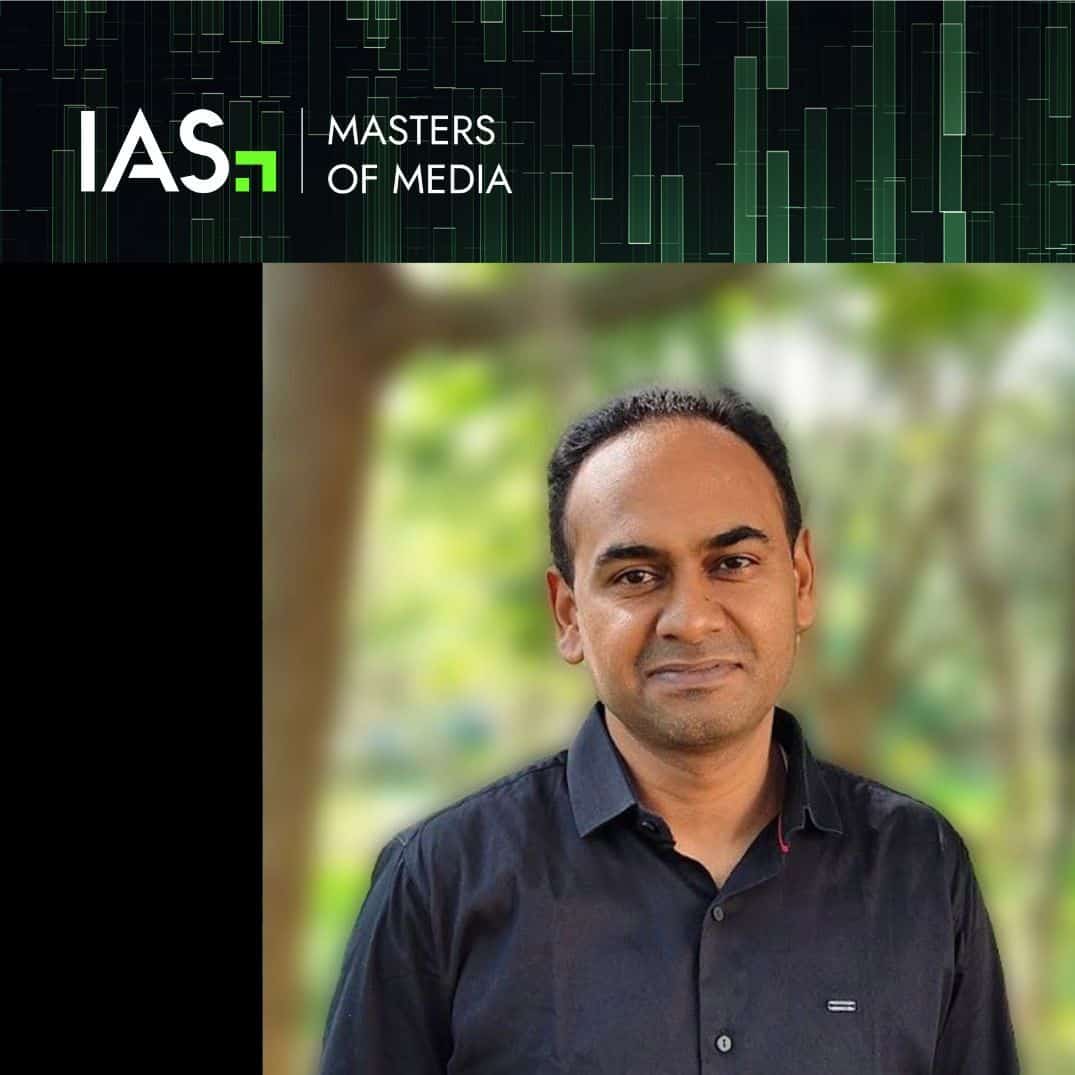
In this exclusive “Masters of Media” series, Integral Ad Science (IAS) speaks to the Movers and Shakers of the APAC advertising industry, on all matters digital.
Sujata Dwibedy is Group Trading Director, Amplifi, Dentsu International.
With over 22 years of in-depth experience in all aspects of media as well as business planning, buying and research, Sujata has delivered the best media products to top notch clients from varied categories.
Her experience pans across large global media giants including IPG, Publicis Groupe, Omnicom Media Group. She is currently at Amplifi Media, the media buying and trading unit of Dentsu International across both offline and digital media.
IAS: Please tell us about your digital advertising journey and your current role at Amplifi
Sujata: My digital journey started more than a decade ago in one of my previous organizations. It was mandated that all the buyers and planners would have to appear for the Google GCP certifications. Also, back then the impact properties on the large networks started getting their OTTs and their website inventory into the packages, so we had to understand the dynamics and negotiate. As the branch head, it was important for me to know each media well for existing as well as new Client meetings. Luckily, all the roles I took up subsequently had digital as part of the delivery. In the current role, I did a digital integrated buying recently, which has also won many awards.
IAS: Given the evolving situation around the pandemic, what have been your key learnings around consumer behaviors in 2021?
Sujata: Consumer behavior has fundamentally changed quite a lot due to the pandemic in the last 2 years. Some of which will have a lasting impact, some may change back. Firstly, they understand what is real and what is pretentious much more than ever. Value & quality are the top drivers. Increased attention to hygienic packaging and sustainable eco-friendly products has increased.
Digital media adoption and acceleration of usage have been the largest learning. Work from home could never be thought of earlier, now people are also talking about a hybrid model. Audiences who are non-digital natives have also started using digital for their daily work such as payments, shopping, entertainment, etc. There is a much greater focus on health and healthy living. There is an online acceptance of medical care and assistance, hyperlocal community interactions and digital person to person interaction with an evident surge in consumption of content. E-commerce adoption across consumer segments has multiplied in double digits. Edu Techs, Fin Techs with new products, D2C commerce, social commerce etc., have also multiplied in addition to retail. Online gaming as entertainment has increased. Consumption of content online for the same traditional media, be it TV content or print leading to huge Convergence. A lot of deep diving is required to understand the consumers today.
IAS: What are some of the initiatives Dentsu has undertaken to stay connected with its workforce and propagate for the wellness of its employees?
Sujata: Dentsu has been holding many ‘Off-work’ sessions on Yoga, Mental Health, Hobbies, etc. Our HR team has been working hard to keep up the sentiments of people throughout. Knowledge group discussions are conducted, and learnings are shared by the senior and global leadership team at regular intervals. It has been a difficult time for everybody especially women due to the work multiplying at both home and office. Hence, in the month of May 2021, lunch hour was announced as no working hour for women. Additionally, a day off was given in October for mental wellness, celebrating world mental health day. So, there are constant efforts which are being made to boost the morale of people.
IAS: According to you, what will enable CTV to become more mainstream for advertisers? What role will its measurement capabilities play to propel CTV advertising?
Sujata: In many of the households in the metros, Connected TV has already become the only source of content viewing. They have cut the cords, which means they have given up their set-top boxes and/or the DTH. The market may have around 10-15 million connections now, however, it is difficult to gauge as there is much more since there is no definite measurement yet. But if you do a dipstick in metros, you will see it is already at about 20-25 million and slated to grow three folds in the next three years. It will gain momentum in the next two to three years and will become an integral part of media plans. Measurability is extremely critical. The OEMs are also working towards it. Hopefully, the industry will come together and push for syndicated measurement data. While independent players might come up with their own numbers, unless it is syndicated and industry-led, it will not be considered authentic.
IAS: In your opinion is the industry doing enough to combat the trust and transparency challenges in the digital supply chain?
Sujata: Trust and transparency are extremely critical in our industry. The majority of spending is done with the big & known partners who are trusted, self-served, and provide details like proof of delivery, invoices, and screenshots where applicable. The concern is on affiliates. There are affiliates mushrooming everywhere and they refuse to provide any details of where they are running the ads. There must be an industry third-party monitoring if that is how it is. The industry must think long-term and put certain rules and regulations in place. We have put certain processes in place which have ensured that there is no lacuna but more needs to be done at an industry level.
IAS: With brands moving away from keywords and cookies to contextual targeting, how is Dentsu approaching this shift?
Sujata: The impact of the end of third-party cookies and the rise of other types of tracking prevention will affect three key elements:
- It will alter the terms of data management, making the perceptions of user consent and positive value exchange key factors.
- It will modify how brands engage with people online, limiting some of the most widespread digital marketing tactics such as retargeting.
- We will have to re-imagine how brands measure performance.
Some alternative routes are already being worked out like first-party data sources. Other routes are still in development such as Google’s Federated Learning of Cohorts (FLoCs), each with different potentials for scale, levels of investment needed, and infrastructure requirements.
For most brands, solutions will not come from a single alternative but from a blend of options unique to their needs. In many instances, we believe it will likely be based on a combination of first-party data relationships, partnerships with walled gardens, non-audience-based targeting solutions such as contextual targeting and hybrid measurement models.
Although this evolution of the cookies landscape has triggered legitimate concerns around the potential consequences on advertising efficiency and on market dynamics, we should all welcome any change promoting user privacy as collective, meaningful progress. As global pioneers and leaders in search marketing, we have extensive experience in developing advanced digital marketing strategies that do not rely on cookies. Today, we are building upon this expertise, working closely with technology partners and publishers, to build new solutions that address business needs while respecting consumers’ privacy. Dentsu experts working on this transition will have much more to say.
IAS: What’s your favorite book/podcast/movie and why?
Sujata: My favorite movie/ book is Gone with the Wind. I truly connect with the lead character because of her courageous and gritty nature. It conveys the message, ‘even if a storm crosses, life must go on’.
IAS: What is your advice to the fresh talent in the industry?
Sujata: The advertising industry teaches us a lot. It is ever-evolving, creative, satisfying, and agile. And if you have the spark, you will shine for sure. Challenges always teach us many new things so keep moving on when you meet challenges.
 Share on LinkedIn
Share on LinkedIn Share on X
Share on X

